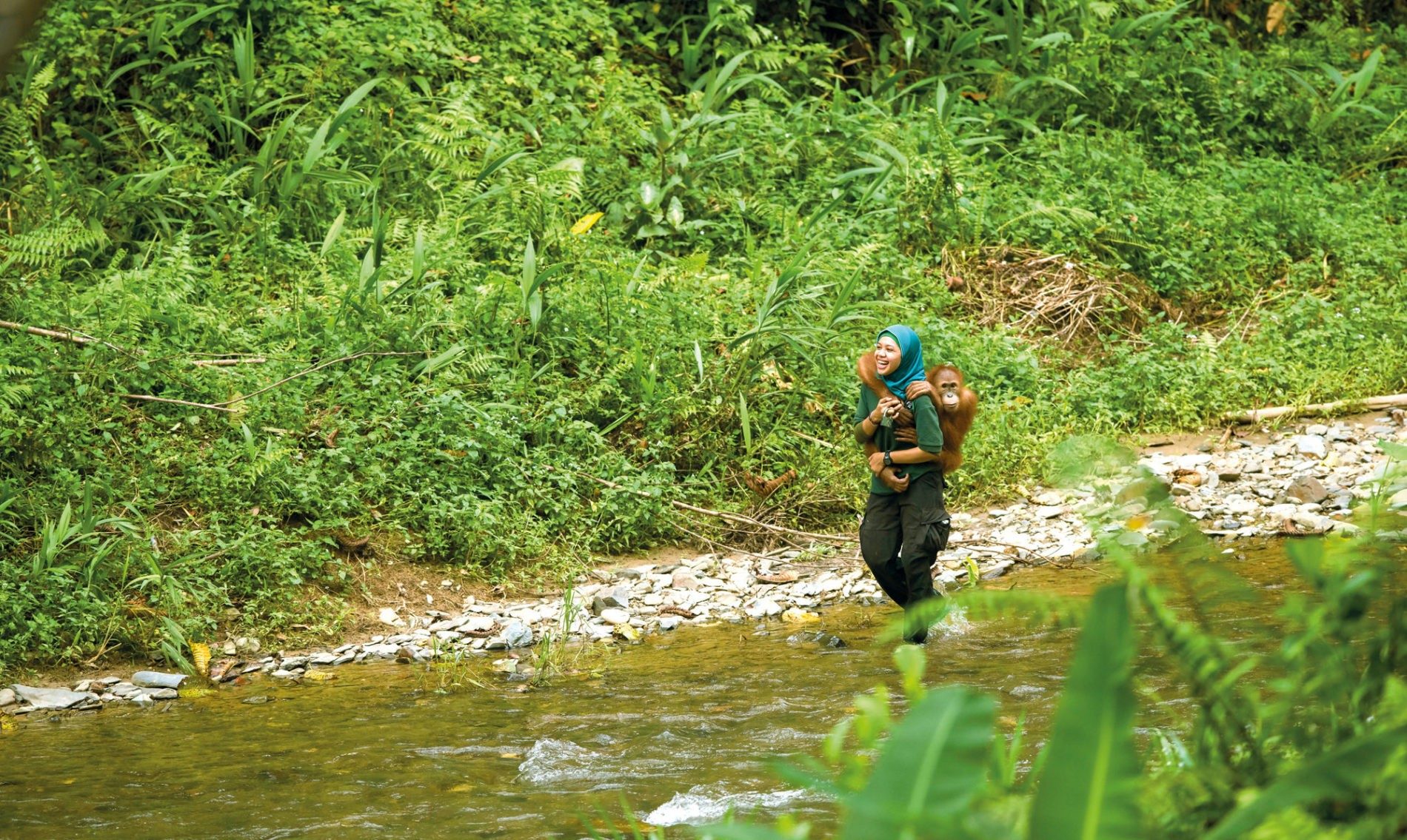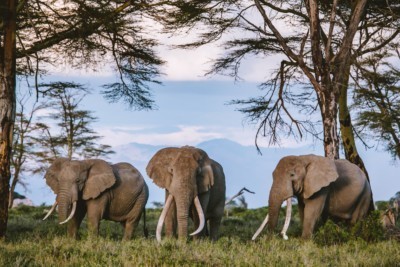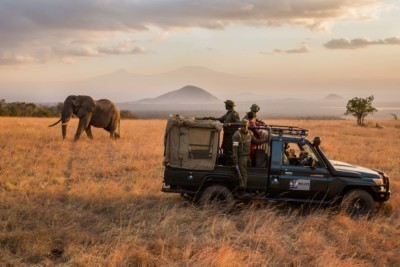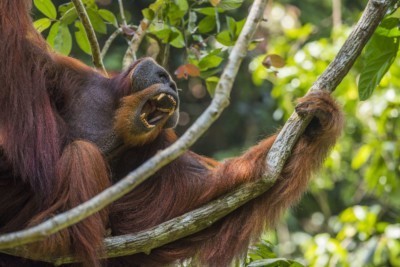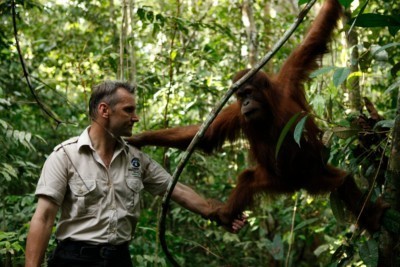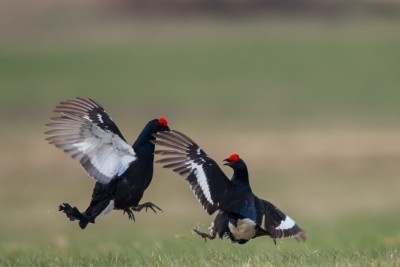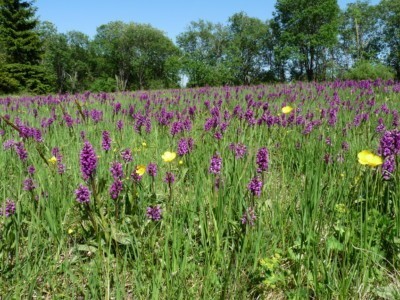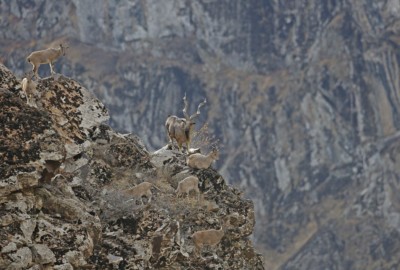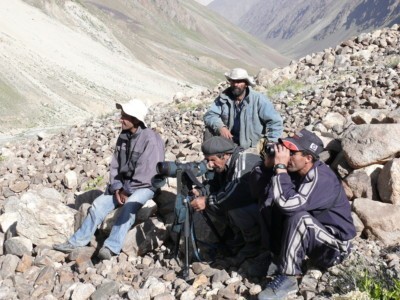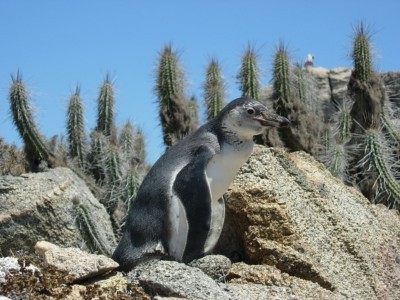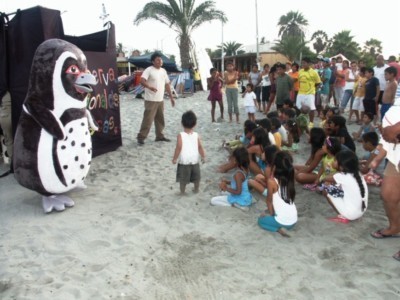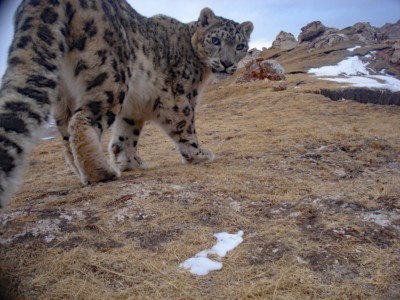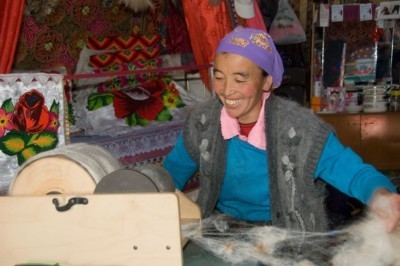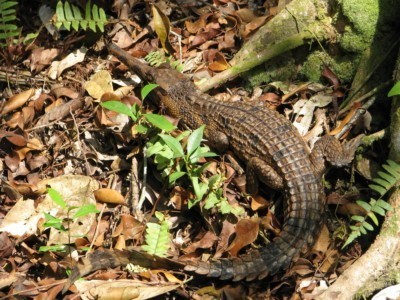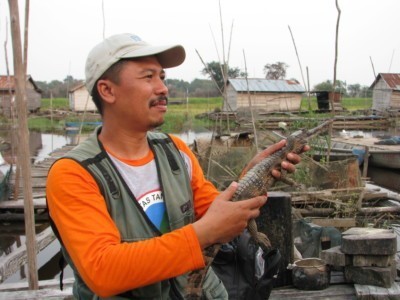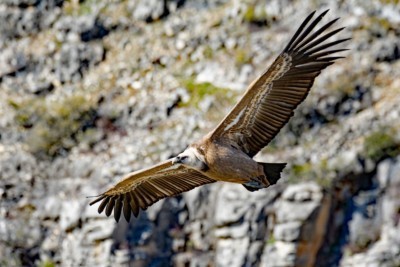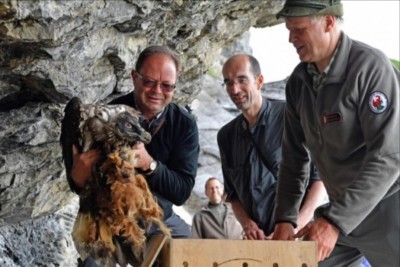Species conservation in the wild
In addition to our activities within the Zoo, we are also actively involved in promoting nature and species conservation all over the world. Most of the animal species are endangered due to the disappearance of their habitat. This means that species can only be conserved successfully in the wild if, in addition to conservation breeding in captivity, habitats are also actively protected.
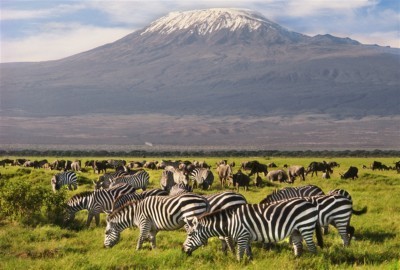 That is why for many years we have been supporting various projects which advocate for species and nature conservation at a local level. With the introduction of the Conservation Euro in December 2018, we have been able to scale up this engagement (from within the Zoo itself) substantially. Here we play an intermediary role between field projects on the one hand and visitors on the other. Visitors have the opportunity to see and experience animal species in the Zoo that we support through field projects using their donations.
That is why for many years we have been supporting various projects which advocate for species and nature conservation at a local level. With the introduction of the Conservation Euro in December 2018, we have been able to scale up this engagement (from within the Zoo itself) substantially. Here we play an intermediary role between field projects on the one hand and visitors on the other. Visitors have the opportunity to see and experience animal species in the Zoo that we support through field projects using their donations.
We are able to support more than 12 species conservation projects with their work on the ground in this way. The eight largest projects are briefly outlined below.
Big Life Foundation
Protecting large animals in East Africa
The Big Life Foundation operates in the Amboseli-Tsavo-Kilimanjaro ecosystem, where it works to protect large animals such as elephants, lions and cheetahs. Part of its strategy is to combat poaching with well-equipped teams of rangers and over 40 permanent outposts. Local Maasai are recruited, trained and employed as rangers. The Big Life Foundation was the first organisation in the region to establish cross-border operations between Kenya and Tanzania, thus enabling much more efficient action to be taken against poachers. The Big Life Foundation is also actively involved in education and awareness-raising among the local population in order to counteract the everyday conflict between people and wildlife. For example, people may be compensated in the event that their domestic animals are lost to predators. Since its inception in 2010, the Foundation has already made a positive impact, and poaching in the region has declined considerably.
Find out more about the organisation
Bukit Tigapuluh National Park
Conservation project in Sumatra
Our Zoo is well known for keeping and breeding Sumatran orangutans. The Frankfurt Zoological Society’s (FZS) Bukit Tigapuluh Landscape Conservation Programme, which is dedicated to protecting orangutans, tigers and elephants in Sumatra, was therefore a natural choice. Bukit Tigapuluh National Park incorporates the largest tract of lowland rainforest on the island and is one of the last remaining refuges for all of the large animals that inhabit the island.
The aim of the programme is the sustainable protection of this unique ecosystem. There are also two rescue and rehabilitation centres for orangutans located on the edge of the national park. Animals that have been kept illegally and then confiscated, or that have otherwise ended up in captivity, are prepared here for surviving independently in the rainforest. The animals are trained in the “jungle school” and given veterinary treatment. This has enabled more than 160 Sumatran orangutans to be released back into the wild over the last 10 years. The aim is to establish an orangutan population with long-term viability. The first wild births are a hopeful sign that population growth will occur naturally.
Find out more about the project
Find out more about the Frankfurt Zoological Society
Mountain pastures in the eastern Erzgebirge
Nature conservation on our doorstep
The higher altitudes of the eastern Erzgebirge region between Altenberg and Fürstenwalde are home to a wide variety of biotopes deserving of protection, and incorporate the largest tract of intact mountain pastures in the Central German Uplands. Valleys and plateaus extending across a total area of 2,860 hectares provide a habitat for unique flora and fauna. The “Mountain pastures in the eastern Erzgebirge” conservation project works to preserve and enhance this vibrant cultivated landscape. The focus of the project is on preserving landscapes with outstanding flora (including arnica, columbine, gentian and orange lily) and fauna (including black grouse, corncrakes and purple emperors).
Open habitats like fens and pastures are also kept clear, and coniferous woodland is being transformed into native mixed woodland. The aim is to create a network of contiguous habitats in this cultivated landscape in the short to medium term. The district of Saxon Switzerland is responsible for executing this project. Funding from the state and federal governments was discontinued at the end of 2018, which is why we decided to support this project through the Conservation Euro.
Find out more about the project
Hoofed mountain animals in Central Asia
ZGAP project for the protection of markhor, Marco Polo sheep and other native hoofed animals
Our Zoo has a long tradition of keeping rare Asian hoofed animals. It was for this reason that we chose the project of the Zoological Society for the Conservation of Species and Populations (ZGAP), a conservation project which operates in Tajikistan and neighbouring countries. The populations of hoofed mountain animals living in the region, which include markhor and Marco Polo sheep, are critically endangered due to poaching and conflicts with the local population. Since they also form the basis of many predators’ diets, including snow leopards for example, having a functioning wildlife system in these regions is vitally important. The project sets up wildlife conservation organisations in close cooperation with the local population, and promotes ecotourism and controlled hunting with strict shooting quotas.
Find out more about the project
Sphenisco e.V.
Protecting Humboldt penguins
Sphenisco e.V. is an organisation founded in 2008 to protect the Humboldt penguin. We are a founding member and have been reporting on the organisation’s conservation projects for many years. The organisation’s priority areas are environmental education in schools, field research, and action against overfishing. The aim is to work with authorities to establish marine protection areas which will secure the long-term survival of the sensitive ecosystem on the Pacific coast of South America.
The wild population living on the coast of Chile and Peru is endangered due to multiple factors. The decline in fish stocks as a result of overfishing and climate change, marine pollution, and illegal guano mining are increasingly threatening the Humboldt penguin’s basis of existence. Animals are also perishing in fishing nets and as a result of blast fishing with dynamite, or are caught, consumed or used as bait.
Find out more about the project
Snow Leopard Trust
Protecting snow leopards
We have been supporting the Snow Leopard Trust since 2003. The organisation is active in the five countries which together are home to 75 per cent of the world’s snow leopard population. It works with governments and local authorities in these countries as well as local populations to highlight alternatives to poaching and methods for protecting grazing animals, thereby making peaceful coexistence with snow leopards possible. Field research also plays an important role. Using GPS collars and camera traps, territorial ranges and population numbers can be recorded.
Find out more about the project
Tomistoma Task Force
Protecting false gharials
The Tomistoma Task Force is a comparatively recently formed task force made up of international crocodile specialists. Its aim is to learn more about the false gharial, obtain more accurate information about the actual population, and develop efficient conservation measures derived from this information. The network advises governments and wildlife management agencies, and initiates research projects and conservation programmes. Moreover, 5 August was declared World Tomistoma Day in order to raise awareness worldwide of the threat facing false gharials. If you would like to find out more about the work of the Task Force, you can find up-to-date information on their Facebook page (IUCN Crocodile Specialist Group).
You can also find more information on the website of the Tomistoma Task Force
Vulture Conservation Foundation
Protecting European vulture species
Another conservation project which has been receiving financial support from us for several years is the Vulture Conservation Foundation (VCF). The Foundation is dedicated to protecting all four vulture species native to Europe. Through monitoring programmes, population numbers in the wild are recorded and the migration routes of individual birds studied. Dresden Zoo has already played an active role in the reintroduction of bearded vultures into the wild. The progeny of a bearded vulture that hatched in Dresden Zoo and that was then released into the wild are now native residents of the Alps. In November 2020, we were able to give two offspring of our Griffon vultures to a reintroduction project on Sardinia. More than 60 Griffon vultures in total have been reintroduced to the Italian island in recent years.
Find out more about the project
discover more
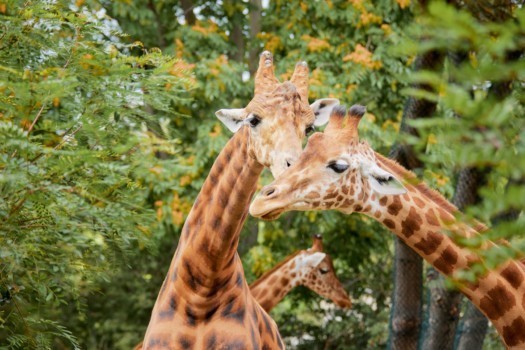
Donations
Donations Your donations to our giraffe and zebra enclosure We are still overwhelmed ...
Donations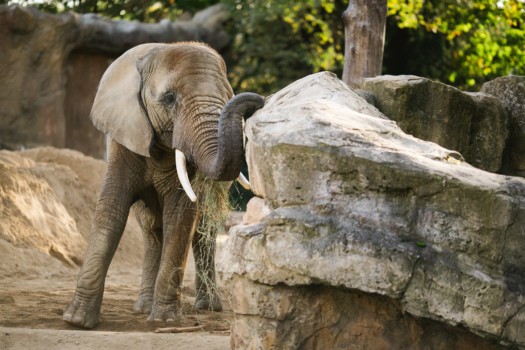
The Conservation Euro
The Conservation Euro Your contribution to nature Nature and species conservation are crucial ...
The Conservation Euro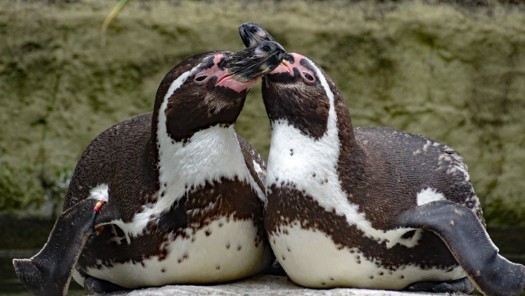
Species conservation in the Zoo
As a scientifically managed zoo, we are not just a place for recreation and leisure. Rather, we see ...
Species conservation in the Zoo